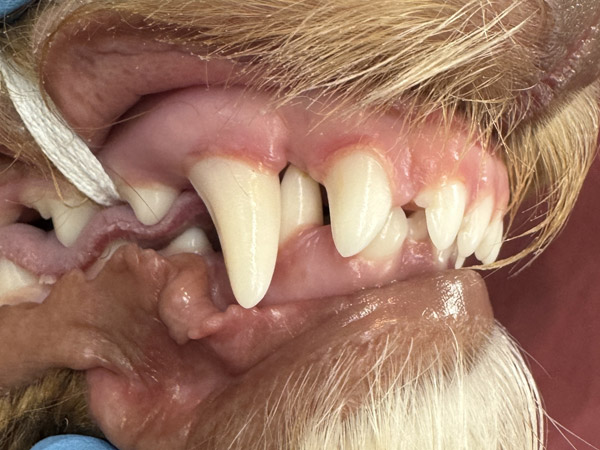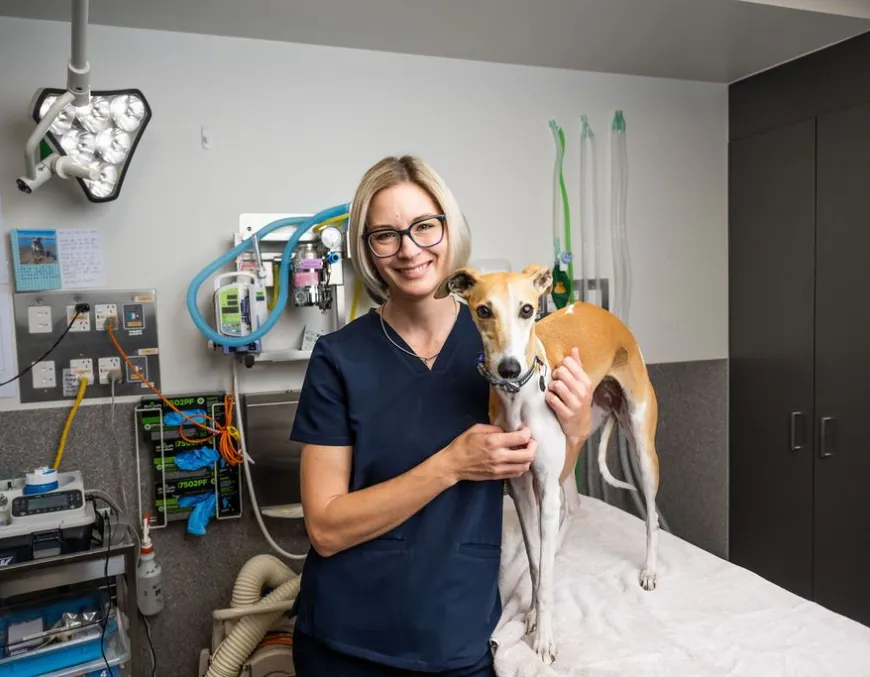Removing complex teeth safely and with minimal impact.
This surgical procedure involves removing a pet’s lower canine teeth, typically to address issues like malocclusion, fractured teeth or advanced periodontal disease. Here is our comprehensive guide on Mandibular Canine Extractions, a crucial aspect of veterinary dentistry dedicated to ensuring the wellbeing of furry companions.

About Mandibular Canine Teeth & reasons for extraction
Mandibular canine teeth play a significant role in dental health, with their large pointed structure and strong roots. While these teeth are strategically important for grasping, defence and tearing objects, they are not indispensable for your domestic dog or cat’s basic function and ability to eat.
Extraction of mandibular canine teeth is common for issues such as malocclusion, fractures or treating non-vital teeth, or advanced periodontal disease. The decision is made carefully, considering alternatives when possible.
“Jaw fractures are rare with proper technique and case selection.”

The procedure, complications & concerns
Mandibular canine extraction typically involves surgery due to the tooth’s size and strong anchorage. The procedure includes creating a mucogingival flap, exposing the root, possibly removing bone, and then elevating and luxating the tooth. Skilled technique is crucial to reduce complications.
The most common issue is wound breakdown, which usually resolves with minimal intervention. Jaw fractures are rare with proper technique and case selection. Changes in jaw strength and tongue position are generally cosmetic and manageable.
“Bone loss after extraction is localised and rarely causes significant problems.”

Regarding jaw structure & treatment options
Bone loss after extraction is localised and rarely causes significant problems. In younger patients, the extraction often doesn’t lead to major structural changes. Severe periodontal disease may cause more noticeable alterations. Concerns about the tongue dropping are mostly cosmetic and rarely seen, particularly in cats.
Despite common concerns, mandibular canine extraction is a safe and effective procedure for addressing painful conditions. It provides relief for pets and peace of mind for owners. While alternatives such as orthodontics or root canal therapy are available, their suitability depends on the specific case.














